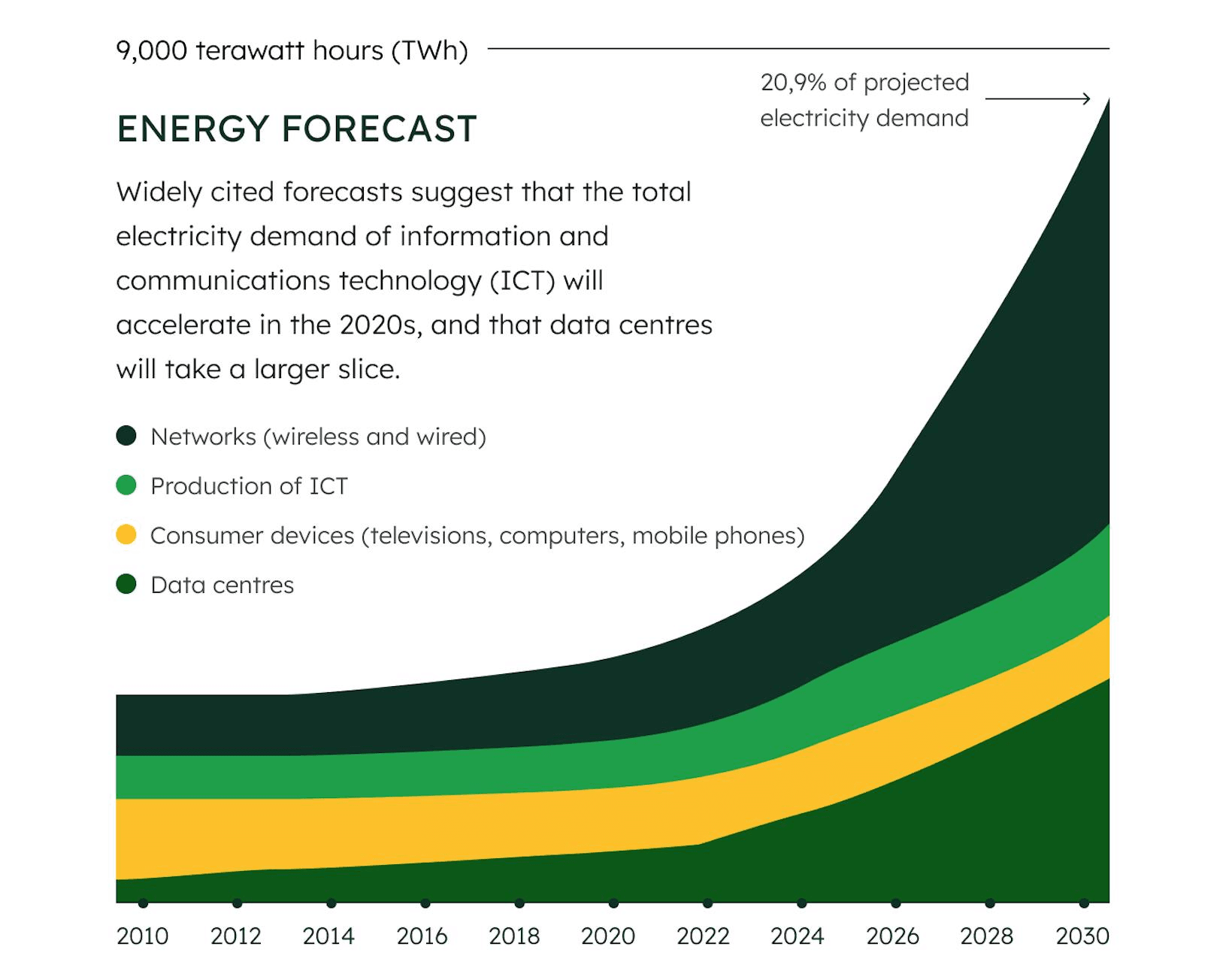In 2024 the internet emits more CO₂ than the aviation industry, yet 96% of websites remain hardly accessible.
In 2021, Codi.pro committed to a mission: to mitigate the internet's negative impact on the real world. Witnessing the web’s incredible waste of resources and potential, we decided to join the front of change. Here's why we chose to act and what we do to make a difference.
By 2030, internet tech will consume 21% of global electricity.
In 2022, internet use was responsible for approximately 3% of the world's total greenhouse gas emissions (equivalent to 1.6k million of a total of 53.8k million metric tons CO₂). That’s 50% more than the global aviation industry. As we rely more on the internet, it's projected that by 2030, around 21% of the world's electricity will be used for internet-related technology.

Yet, by applying 5 sustainable techniques, websites can become climate-neutral.

Choosing a sustainable technology.
The older the technology, the more bloated it becomes, and the more processing power the site requires. Choosing modern stacks, such as JAMStack, ensures your site will make efficient use of available resources.
Optimizing each image file.
In most websites’ cases, images are the heaviest component on the page. By using the newest compression algorithms and adjusting the image dimensions and resolution, the images become up to 86% lighter.
Implementing a Content Delivery Network.
The closer the user is to the server, the shorter the data travel distance and resource requirements. A Content Delivery Network, like a global parcel shipping center, hosts data in multiple locations to reduce user-server distance.
Choosing a green hosting.
Various sources, including fossil-fueled and renewable energy power plants, can power the server hosting the site. The latter minimizes CO₂ emissions almost to zero.
Applying clean coding practices.
For when you need to take your company’s online presence to the next level and provide business-related information for multiple audiences.
STANDARD
What gets measured, get’s managed – How do we assess site’s sustainability?
-
BAD RESULT
>0.8g CO₂/visit
This is how much an average website produces. At this rate, a site with 10,000 monthly page views, produces at least 102 kg CO₂ per year. That’s as much as 44 litres of burned petrol.
-
GOOD RESULT
0.3g CO₂/visit
At this rate, a site with 10,000 monthly page views, produces 36 kg CO₂ per year, that is as much as 16 litres of petrol.
-
BEST RESULT
<0.09g CO₂/visit
Rarely achievable result – only for the simplest pages, with a handful of images. 10,000 monthly page views, would produce <11 kg CO₂ per year, that’s as much as 5 litres of petrol.